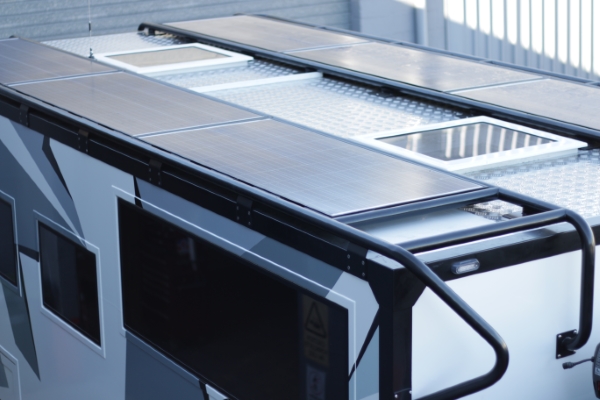So, you finally have your dream campervan.
After decades of planning, you’re finally on the road. It’s jammed to ceiling with superfluous junk, the kids are whipping up road-trip funk to be feared and you have your fridge, water and solar systems installed. You are living the dream and your simple task is to drive tens of thousands of kilometres and keep everything running perfectly in the most remote country in the world.
Don’t tell her how nervous you are, just smile.
This was my reality just a few years ago and I learned some valuable lessons about “that other solar market” – mobility.
The mobility solar market includes campervans, caravans, boats and some industrial applications and is a subset of the wider remote generation market. For years it has been a small but stable opportunity that has grown steadily as solar prices have fallen, fuel costs have risen and technology has helped create better solutions. Over the years I’ve helped design and install many systems and worked with hundreds of businesses who are involved.
The evolution of this other market just keeps on happening.
On our trip of a “mobility” lifetime a few years ago, the inevitable happened; our battery failed. We have a pretty good little set up; solar laminates embedded into the pop-top roof, a backup mains charger, an intelligent alternator charger and a dedicated second battery.
However, as the relentless top end heat and our consumption increased on our holiday, the fridge energy use increased dramatically, pounding our poor little battery into submission. It took me a little while to understand and confirm what had happened and even longer to justify my alleged expertise and preparation to my frustrated family.
Replacing the battery was easy enough but the real solution was adding more capacity. Problem was, I had nowhere to fit a larger battery due to the essentials of life such as large bags of knitting, an entire library of books and ToyWorld’s entire catalogue. We battled through.
The other day I was chatting to someone who has been specialising in mobility and remote generation for almost 20 years. Chris McClellan from Enerdrive tolerates me nagging him because he’s intrigued by my electric motorcycle, but that’s another story.
What I learned from Chris was that Lithium batteries are already changing his world. It’s real now.
Chris was at pains to point out that on his assessment, the most obvious and beneficial market to use Lithium batteries first, is where the weight and energy density are most valued; in mobility. Over the last few years Enerdrive have designed, developed and constructed a uniquely Australian solution using Lithium batteries and that’s where they have focused.
They tell me they spent a lot of time looking for the right chemistry; (there are around 30 different Lithium based chemistries in the market) and ultimately settled on Lithium Iron Phosphate (LiFePO4) as offering the best combination of cycle life, safety, price and performance.
The second was the crucial safety and management controls needed. “Lithium batteries behave completely differently to lead acid, and we have dedicated years to designing controls systems that really work, and cell management systems that maximise life and ensure they are safe.”
Lead acid batteries can be dangerous because they contain corrosive acid and emit explosive gas. Lithium batteries don’t have these issues but can catch fire if you don’t have a really intelligent and robust Battery Management System (BMS). Chris’ team developed a BMS in conjunction with their suppliers that have built in redundancy, various protection modes and constant monitoring.
“This is the hardest part of the whole equation and where our experience in remote generation was invaluable. You can get cheap Lithium cells but the BMS has to be of outstanding quality, chemistry matched and reliable. We had to develop this in house to get it right”
Had this battery been available on my infamous trip, I could have added at least 25% more capacity in the same space but the trick is I could also double the discharge level, so I actually have more like 50% more available capacity and, it’s around 20% lighter for the same capacity. In a motorhome, boat or portable application that’s adds big value and frankly, my beer would have been colder, longer.
Couple all this with a far simpler information flow, more advanced controls and you start to understand why Lithium has indeed arrived.
(For Original Article visit the Solar Business Services Website – www.solarbusiness.com.au)
